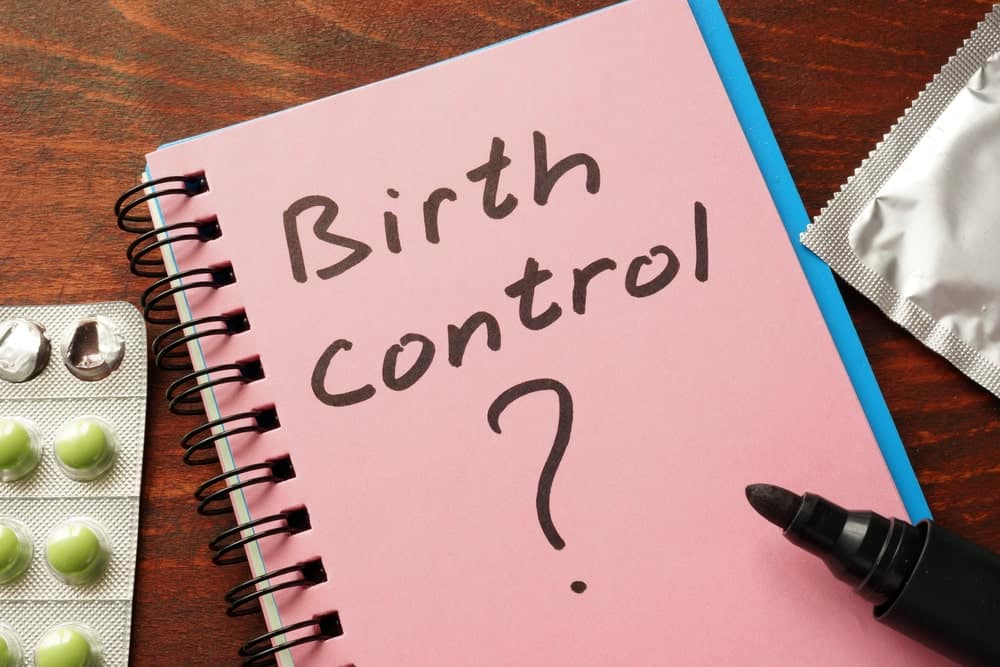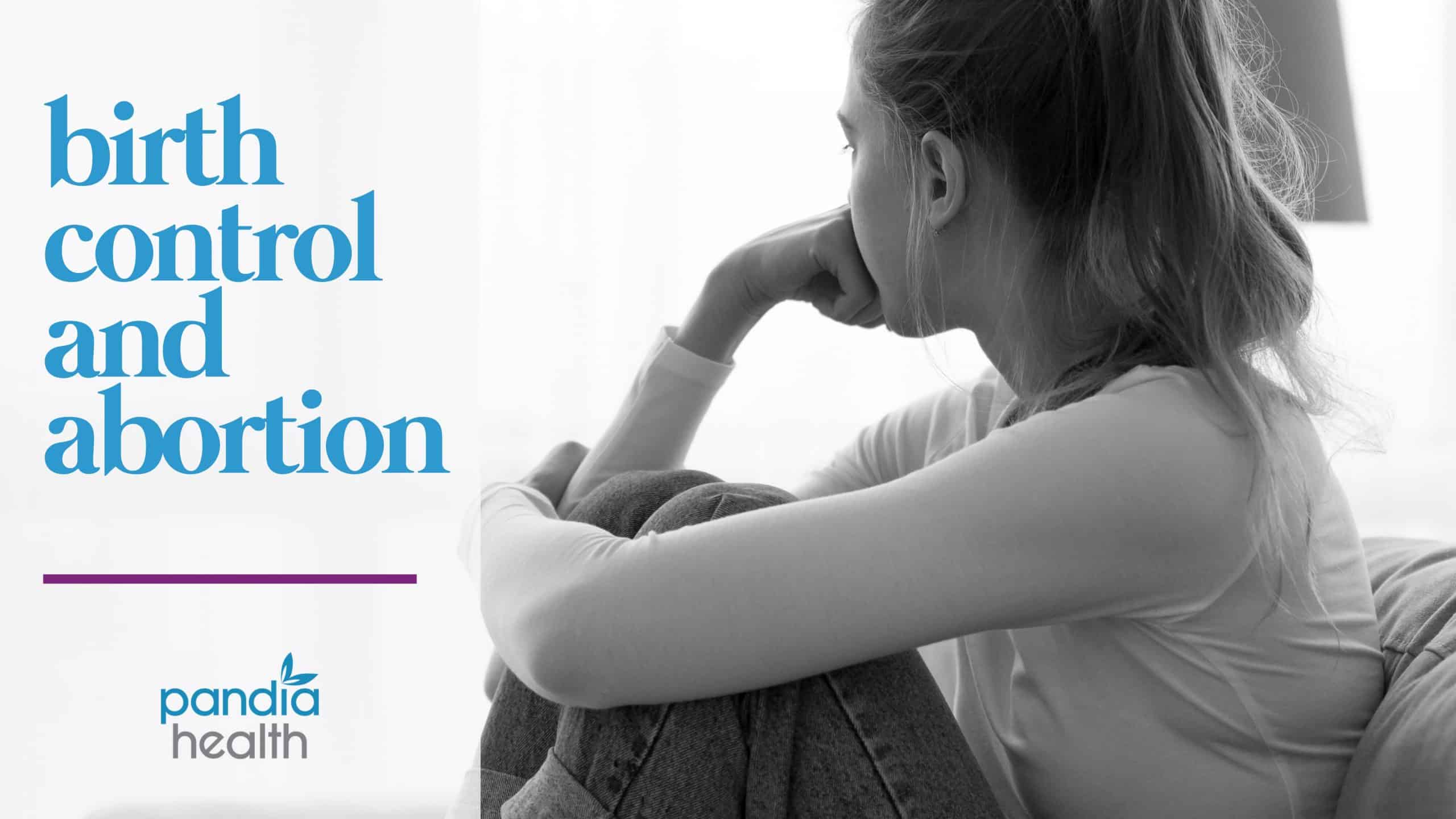Medically reviewed by Sophia Yen, MD, MPH – Written by Pandia Health Editorial Team
There are many different types of birth control or contraceptive methods that are safe, affordable, effective, and can fit different lifestyles and budgets. There are hormonal, non-hormonal, and also natural methods of birth control.
Unfortunately, there is some confusion between birth control methods, or contraception, and abortion. Birth control, in all forms, whether it is hormonal, non-hormonal, or natural, prevents conception. But an abortion takes place after fertilization, or conception has already occurred. Contraceptive methods are not abortions, and abortions are not contraception. The following article will explore the different types of birth control methods, abortion rates, and why women have abortions.

What are the different types of birth control?
Birth control is an umbrella term for the many different types of methods and products that people will use to prevent conception or pregnancy. In today’s modern age, there are, fortunately, many different types of birth control methods that can fit anyone’s lifestyle or budget. The problems with birth control in today’s world are less a matter of possibility and effectiveness, but problems stemming from a lack of access and education. However, some types of birth control are more effective than others. No single birth control method on the chart has a 100% effective rate.
Contraception, or birth control, is divided into different types:
Hormonal Methods
There are birth control products that use combined hormones, such as the patch, the pill, or vaginal ring. There are also progestin-only birth control pills and injections.
Intrauterine Devices
There are copper and also hormonal IUDs that can be inserted by a doctor and offer protection from pregnancy for several years.
Barrier Methods
Barrier methods include products such as male and female condoms, spermicides, diaphragms, cervical caps, and sterilization (vasectomy and tubal ligations).
Natural Methods
Natural methods of birth control include abstinence, the fertility awareness method, or FAM, withdrawal, and also the lactational amenorrhea method (LAM).
Emergency Contraception
There is also emergency contraception available either over the counter or from a doctor. Emergency contraception can be given in either a pill form or as an intrauterine device after intercourse to prevent conception.
Who uses contraception?
- 99% of women between the ages of 15 and 44 who have had sexual intercourse have used at least one contraceptive method.
- 60% of all women of reproductive age in the U.S. are currently using a birth control method.
- In the U.S., the number of desired children for the majority of families is two children. To achieve this, the average woman will need to use birth control for up to three decades.
- 70% of all women of reproductive age who are sexually active but do not want to become pregnant are at risk of unintended pregnancy if birth control methods fail.
What is abortion?
Abortion is a non-surgical and also a surgical procedure that is used to stop the progression of a pregnancy. Abortions are performed at 28 weeks or less of gestation. Although birth control, when used correctly and consistently, is highly effective, there is no 100% effective method or perfect user of birth control. An abortion can be induced with medication if the pregnancy is less than ten weeks along, or with a surgical procedure called a dilation and curettage if the pregnancy is more advanced.
51% of all abortion patients in 2014 in the U.S. report using a contraceptive method at the time of pregnancy. This number had decreased from 54% in 2000. Reports indicate that the reasons for the decline were attributed to better education and access to more effective birth control methods.
The most common methods of birth control used by abortion patients include:
- Condoms, 24%
- Birth control pills, 13%
The majority of abortion patients are in their 20s and 30s. Adolescent abortion patients have declined more than 32% from the years 2008 and 2014, attributed again to better education and access to birth control methods. More than half of all abortion patients already have at least one other child.
Why do women have abortions?
Surveys indicated that the most common reason for having an abortion was that an unintended pregnancy would interfere with a woman’s education, work, or their ability to care for their dependents, at 74%. Numerous research also supports that when women have the ability to control when and how often they get pregnant is directly correlated to higher levels of educational attainment, better finances, and more healthy pregnancies and babies.
73% of abortion patients cite not being able to afford a child at the time, followed by not wanting to be a single parent or having relationship issues, at 48%. Four in ten surveyed abortion patients said they were finished having children, and one-third did not think they were ready for a child. Less than 1% said that a parent’s or a partner’s decision had any influence on whether or not they wanted an abortion. Young women more frequently cited that they were unable or unprepared to transition to motherhood, while older women had too many responsibilities to other dependents.
Public and political discussion in the U.S. tends to focus on policy regarding abortion. But there is little talk about the women who have them and why they have them. While there is a small number of women who get abortions because of non-viability, fetal abnormalities, or rape and incest, the majority of decisions regarding termination are motivated by multiple and interrelated reasons. The recurring themes in many different studies on abortion frequently cite responsibilities to others and resource limitations as the most significant reasons behind terminating an unintended pregnancy.
However, the most effective way to prevent unintended pregnancies and abortion is with safe, effective, affordable, and convenient access to birth control. Innovative, cutting-edge companies like Pandia Health are leading the way to give women better access to safe, affordable birth control options. When women can control when and how often they get pregnant, they can achieve better health outcomes for themselves and any children they choose to have.
Disclaimer: The views expressed in this article intend to inform and induce conversation. They are the views of the author and do not necessarily represent the views of Pandia Health, and are for informational purposes only, even if and to the extent that this article features the advice of physicians and medical practitioners. This article is not, nor is it intended to be, a substitute for professional medical advice, diagnosis or treatment, and should never be relied upon for specific medical advice.

